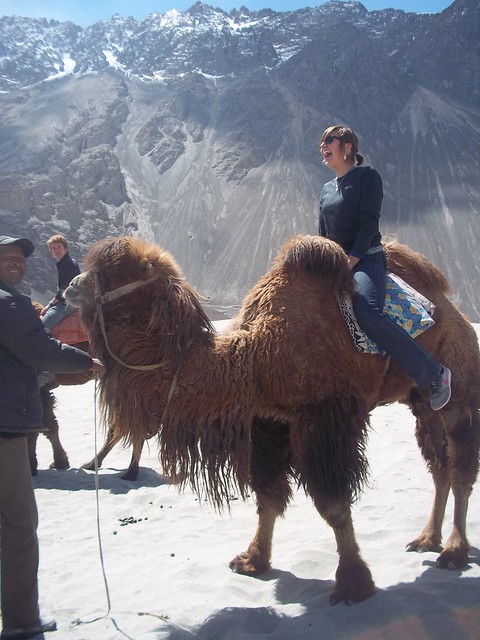Kathakali, translated as “story-telling,” is a classical dance-drama that dates almost 400 years ago. Actor-dancers, dressed in voluminous colorful skirts with elaborate headdresses and jewelry, act out climatic stories of love and valor involving frenetic drumming, emotional singing, and rhythmic movements. There are singers who sing the storyline in addition to the actor-dancer applying facial movements and mudras (hand movements) to convey emotions and dialogue.
I attempted to learn this dance form for a period of two and a half week, which was not nearly close enough to learn the basics. It was difficult, painful, and sweaty work. Class involved eye exercises that stung and brought tears to my eyes, the footwork required rolling your foot outward in such a way that your ankles were supporting your weight rather than the flat of your foot, and body technique entailed squatting so low with your back perfectly vertical and your thighs horizontal to the ground. Regardless of the physical exhaustion, which once made me collapse on the ground during class, Aashaan, my Kathakali master, was so impressed with my ambition that I was offered the opportunity to attend one of his performances and observe the entire process of a Kathakali performance. I got myself involved in an unforgettable experience.
Aashaan could not come and get me, so I accompanied his four students, who knew little English, to the temple where the evening performance was to take place. It was immediately uncomfortable considering the fact that I was one Caucasian with four Indian Kathakali students. I witnessed the four hour preparation of make-up, costumes, and stage setup. During the three hour performance, I sat front row with a mother who knew English and was the mother of one of the students. At the end of the performance, I ate with all the individuals involved in the production of the evening’s performance and then took a rickshaw ride back home with one of the Kathakali students. Considering the language barrier aside from Aashaan and the mother, my cheeks were sore from smiling the entire day to show my appreciation of the event, and by the time I arrived back to our home at midnight I was exhausted and yet so full of astonishment from the experience.
-Tracy Moyers
Cars, motorcycles, bicycles, trucks, and rickshaws surround our bus which is driving in the other lane into oncoming traffic just barely missing the truck that is coming towards us in the lane we should not be driving on in the first place all to pass one car that is going too slow. All of this taking place on dusty roads filled with endless bumps and potholes. Accompanied by the constant honking of horns. This has become a normal part of our bus trips through India.
In the almost two months we have been here we have spent a lot of time traveling on a bus. This description provided above is normal driving in India. There really are no traffic rules. A road that has two lanes quickly turns into five or six lanes of traffic. Motorcycles pass you on every side followed by rickshaw drivers and cars that think they are small enough to squeeze through the tight space past our huge tour bus. Throw in mobs of people running across the streets or street venders knocking on the bus window trying to sell you their product. In the mist of this craziness we sit safe in our tour bus as it maneuvers its way through the crowded busy streets of India.
I have enjoyed time spent traveling on the bus. It provides us the opportunity to see the cities we drive through without having to deal with the mobs of people who try to sell you things if you were to walk through the streets. Bus rides also provide multiple changes of scenery. We travel through cities streets which lead us to roads where no matter what direction you look out all you see is rice fields then back to the busy city streets. Our most recent travel was by bus from Agra where we were able to see the Taj Mahal to Jaipur the “pink city.” Bus rides not only provide time to appreciate the scenery but also give us time to sleep (if you can on the bumpy rides), read, journal, listen to music, talk, play cards, and just have a good time together as a group. As we continue to travel and see different sites in India we get more and more used to the traffic patterns and no longer are worried about crashing into oncoming traffic. We continue to look forward to what new modes of transportation we will get to experience. We can check off bus, plane, train, and rickshaws. We await our elephant and camel rides as well as hopefully taking jeep rides through the dunes of the desert. India has been a crazy different experience everyday and we are excited to see what the next month and a half has to offer.
-Adriana Santiago
